APPLIED Adhesives specializes in offering a comprehensive portfolio of adhesive solutions, including hot melt adhesives, water-based adhesives, hot melt and water-based pressure-sensitive adhesives, sustainable adhesives, and reactive adhesives, as well as UV and water-based coatings. With our expertise, we help you navigate the complexities of adhesive selection to find the perfect solution for your unique applications.
APPLIED Adhesives
Comprehensive Adhesive Solutions
Explore Our Extensive Adhesive Solutions Offerings
- Hot-Melt Adhesives
- Water-Based Adhesives
- Pressure-Sensitive Adhesives
- Sustainable Adhesives
- Reactive Adhesives
- UV & Water-Based Coatings
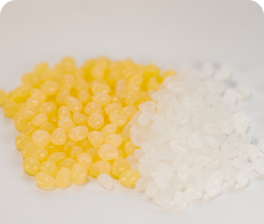
Hot-Melt Adhesives
Hot melt adhesives are thermoplastic materials that start in liquid form and solidifies upon cooling to room temperature. Manufacturers seek out hot melt adhesives for their excellent bonding strength and fast set speeds.
APPLIED carries a full range of hot melt adhesives utilizing the full range of polymers including Metallocene Polyolefin (mPO), Metallocene Polyolefin blends (mPO/Rubber, mPO/EVA), Ethylene Vinyl Acetate (EVA), Rubber-Based Pressure Sensitives (PSA), Atactic Polyolefin (APAO), and Polyurethane Reactives (PUR) to meet all of our customer’s needs.
These adhesives have a wide range of applications (high temperature, low application temperature, and freezer grade applications) including end-of-line packaging, bottle and can labeling, bookbinding, fugitives, bag making, tag & label, and product & durable assembly to name a few.
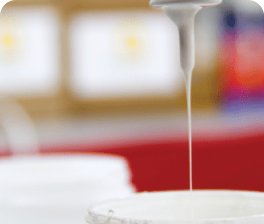
Water-Based Adhesives
Adhesives that work through the evaporation or absorption of water into the substrate are called water-based adhesives.
While they are created using natural polymers like Starch, Dextrin, Casein, Natural Rubber Latex, and Animal Glue, water-based adhesives can also contain synthetic polymers like Polyvinyl Acetates (PvoAC), Vinyl Acetate Ethylene (VAE), and Acrylics.
Water-based adhesives are commonly used in Corrugated Glued-lap and Folding Carton, Litho Laminating, Tube Winding, Tissue and Towel, Palletizing, Bottle Labeling, Envelop Converting, Label Converting, and Bag Making.
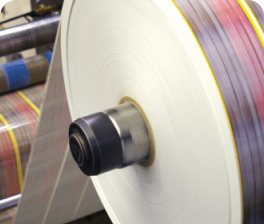
Pressure-Sensitive Adhesives
Pressure sensitive adhesives (PSAs) bond surfaces through surface contact with minimal pressure and require no activation by water, solvent, or heat.
PSAs can be formulated into Emulsion (Water-Based), Hot Melt, Solvent-Based, and UV-curable forms. The main adhesive chemistries are rubber/resin, acrylic, and silicone, each with its own advantages and challenges. They can be applied directly to the surface or converted into tapes such as single-faced, double-faced, and transfer tapes.
PSAs provide strong adhesion to various surfaces, including plastics, metals, and glass. Common uses include the production of adhesive tapes, electronics, and several transportation and durable assembly structural applications. They are also popular in medical applications.
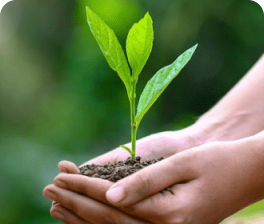
Sustainable Adhesives
With a goal of enabling the earth and humans to coexist into the future, sustainable adhesives meet increasing governmental regulations and consumer environmental concern.

Reactive Adhesives
Advanced reactive adhesives use chemical reactions to create an adhesive bonding and are often used for specialty applications. APPLIED Adhesives’ innovative technologies include: web, cyanoacrylates, methyl methacrylate, epoxies, urethanes, and silicones.
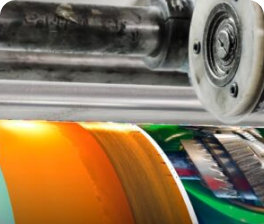
UV & Water-Based Coatings
UV Coatings cure and crosslink in the presence of radiation (UV light), while water-based coatings work through the evaporation or absorption of water into the substrate.
APPLIED Adhesives offers a range of UV and Water-base coatings, including General Aesthetic (Dull to Gloss), Digital (Dull to Gloss), Tactile (Raised Image/Embossed), Glitter (Multitude of colors), Pearlescence, Holographic, Ink Receptive/Writable and Glueable, Soft Touch, Scratch-off, Metallic/Reflective, Thermochromic, and glow-in-the-dark. We also offer 100% Solventless Silicone, UV Free Radical cure, and/or UV Cationic cure silicones.
Our coating technologies are commonly used in Packaging & Printing (Direct Mail, Paperboard, and Flexible Films) and Labeling (Food, Pharmaceuticals, and Consumer Goods), and integrated Label (Release Liner, In-line Converted Labels, Envelopes, and Pouches) applications.
